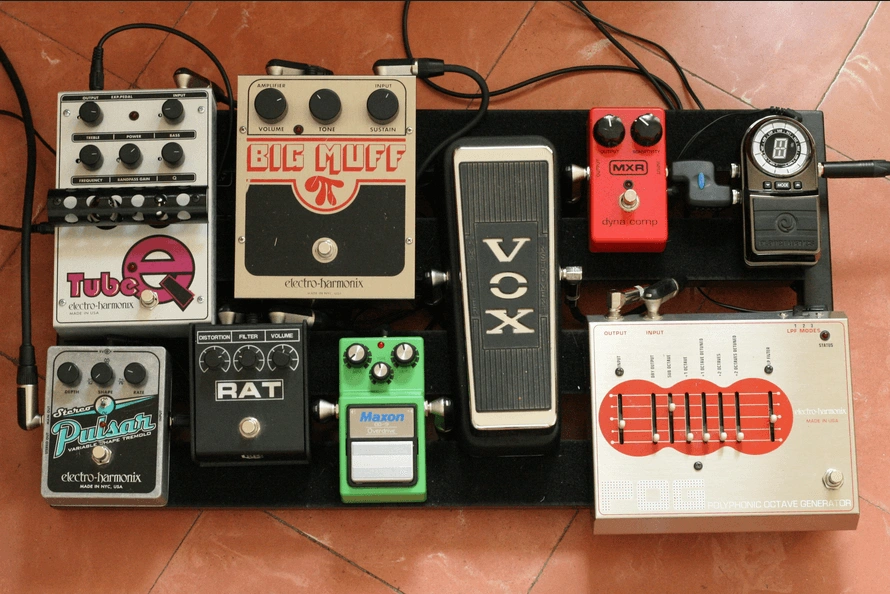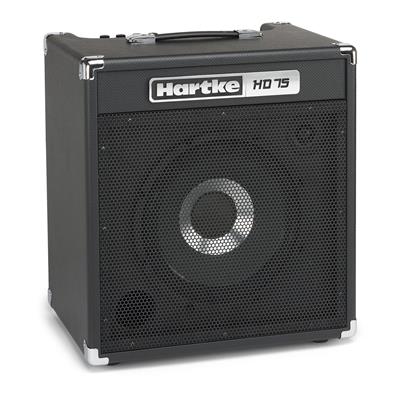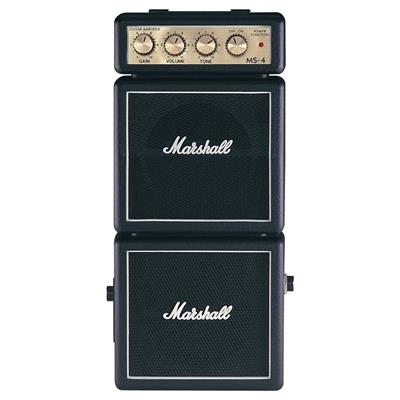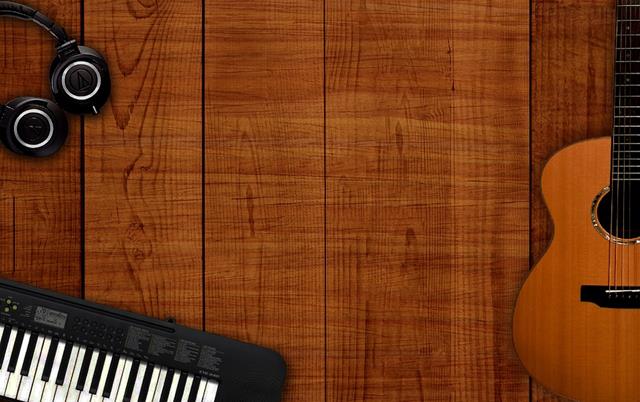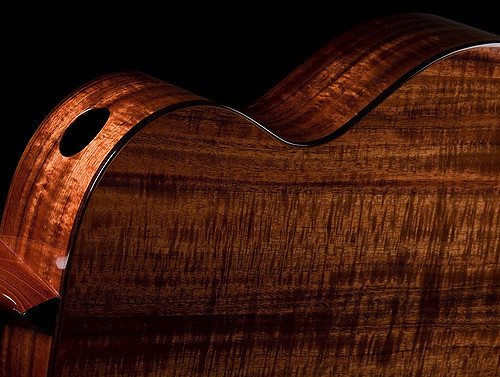Welcome, my friend, to the wonderful and exciting world of guitar effects pedals. The fact that you are here means that you have been fond of these little devices for a while now. Maybe you are just starting to get into the whole thing and want to explore some more before making the final decision. One way or another, you are in the right place. With the abundance of choices and variations, it is hard to pick out something that will work perfectly for your music. I know that from my own experience. You see all those effects and you want to grab them all, but that would probably cost you a fortune. Plus, I do not think anybody wants to have 30 pedals on their pedalboards.
With that being said, it is crucially important to know what each effect does and how it alters your tone. You have to know how to treat your pedals in order to get the best results. You have to understand the interaction between your instrument and your favorite stompbox. You also have to be aware that you will need something (a.k.a. pedalboard) to organize all those pedals. I will do my best to include all that information as I dive into discussing the majority of effects pedals out there. Let’s not waste any more time and commence our small venture.
Distortion Pedal
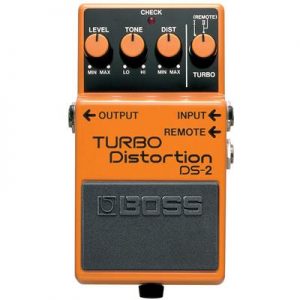 Before I continue, I want to point out that I will be talking about the distortion as a type of effect, not the whole group. This is a small detail but it will make it easier to understand what I am about to say. Distortion is an audio effect that relies on signal clipping. When the pedal is activated, the audio wave is being chopped harshly. This creates a sound that is steeped with girth, fierceness and power. This effect produces gnarly and growling tones that add uniqueness to your performance. It fills everything up with character, definition and diverse dimensions. What’s not to love, right?
Before I continue, I want to point out that I will be talking about the distortion as a type of effect, not the whole group. This is a small detail but it will make it easier to understand what I am about to say. Distortion is an audio effect that relies on signal clipping. When the pedal is activated, the audio wave is being chopped harshly. This creates a sound that is steeped with girth, fierceness and power. This effect produces gnarly and growling tones that add uniqueness to your performance. It fills everything up with character, definition and diverse dimensions. What’s not to love, right?
The best distortion pedal is quite hard to find. We all have different needs and preferences, making it difficult to dictate which unit will be everybody’s cup of tea. However, there are certain features that help us draw a general picture of the fully-equipped pedal. First and foremost, a device of this ilk must possess the Gain (also labelled as Drive or Distortion) knob, which enhances the level of the input signal and makes the distortion happen. Then, you will need a Level (Volume) knob, which allows you to modify the volume of the overall output and make sure that your effect is not too loud. It is always a good idea to have some kind of tone-shaping options on hand. By this I mean simple Bass and Treble knobs (or Tone), that will enable you to even out various frequencies. And finally, you might have a Boost control, which will add some extra “oomph” to your sound and define your tone even more. Even though it is possible to create a badass distortion with just Gain and Level knobs, it is always better to have more adjustable parameters. That pretty much sums up the basics of distortion pedals.
Overdrive Pedal
 Overdrive is the subtlest type of distortion. It is based on soft-clipping of the signal, thus, the resulting sound is milder and less aggressive. The original way of achieving this effect was by overpowering the preamp section of the tube amplifier until it would overdrive, creating the sweet tone. Tube overdrive is still very popular amongst various musicians. Nowadays, it can be produced using pedals, which eliminates the need to invest in an expensive tube amp. Overdrive is renowned for its sweet, beautiful tones that thicken up the sound without adding too much girth. This effect can be utilized in any genre, which makes it extremely flexible and versatile.
Overdrive is the subtlest type of distortion. It is based on soft-clipping of the signal, thus, the resulting sound is milder and less aggressive. The original way of achieving this effect was by overpowering the preamp section of the tube amplifier until it would overdrive, creating the sweet tone. Tube overdrive is still very popular amongst various musicians. Nowadays, it can be produced using pedals, which eliminates the need to invest in an expensive tube amp. Overdrive is renowned for its sweet, beautiful tones that thicken up the sound without adding too much girth. This effect can be utilized in any genre, which makes it extremely flexible and versatile.
How to find the best overdrive pedal? – you might ask. Well, there are a number of things to take into account. First of all, you have to figure out your budget. Luckily, it is possible to find a great option at any price range. There is an array of cheap stompboxes that can produce mind-blowing tones. However, you have to be aware of the fact that they might not be as durable as higher-end ones. Second of all, you should ask yourself, what your ultimate goal is. Do you want a pedal that will shatter the windows and make your ears bleed or something that slightly alters your tone? The answer to these questions will help you understand your music better, which, in the end, will ease the process of finding the best overdrive pedal. Last but not least, you have to do your research. Read as many reviews as you can, listen to various demos and then make the final decision. This way you will be sure that you are purchasing something worthy of your efforts. Keep these tips in mind and continue the quest for the perfect sound.
Delay Pedal
 Delay is an audio effect that records the signal of your instrument and plays it back after a small period of time. This playback can be multiple or single and produces something that resembles echo. The most convenient way of recreating this effect is by using a pedal. It allows you to control different parameters of your sound and, thus, modify the delay until you find the perfect settings. The most common features of delay pedals are Delay Time, Tap Tempo, Feedback and, of course, Level knobs. Several advance stompboxes might even have additional modes, which allow you to select various types of delays, including tape, slapback, ping-pong and etc. As you can see, this effect is extremely versatile and offers a wide range of sonic possibilities.
Delay is an audio effect that records the signal of your instrument and plays it back after a small period of time. This playback can be multiple or single and produces something that resembles echo. The most convenient way of recreating this effect is by using a pedal. It allows you to control different parameters of your sound and, thus, modify the delay until you find the perfect settings. The most common features of delay pedals are Delay Time, Tap Tempo, Feedback and, of course, Level knobs. Several advance stompboxes might even have additional modes, which allow you to select various types of delays, including tape, slapback, ping-pong and etc. As you can see, this effect is extremely versatile and offers a wide range of sonic possibilities.
In order to find the best delay pedal, you have to choose between digital and analog variations. Which one is better? The battle of these bad boys has persisted for a while now and still nobody has a clear-cut answer to this question. After all, it is a matter of taste. I will try to explain both and leave the choice to you. Analog delay pedals operate using the Bucket Brigade Device (BBD) chips in order to transmit the signal. Such kind of circuitry is why analog devices are so appreciated in the music industry. It adds a sweet vintage touch to your sound and defines it even more. Now, digital delay pedals employ Digital Signal Processing (DSP). To put it simply, they transform your sound digitally. This also means that such kinds of units are way more flexible than their analog siblings and can offer way more versatility. The difference between analog and digital delay pedals in terms of sound quite noticeable if you listen to them side by side. I would recommend trying out both of them and making the decision accordingly.
Wah Pedal
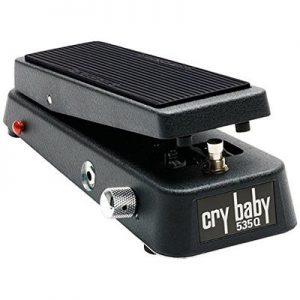 If you have listened to Jimi Hendrix’s “Voodoo Child”, you know how wah effect sounds. It basically recreates the “wah-wah” sound that is emitted by humans. And it does so by modifying the frequencies of your signal. This means that it plays with the filter response and shifts the peaks in the waves up and down. The result sounds exactly like wah. This effect is widely utilized in almost every genre and can be heard in a number of well-known recordings. Eric Clapton, Jimmy Page, Terry Kath and even Tony Iommi of Black Sabbath were dedicated users of wah.
If you have listened to Jimi Hendrix’s “Voodoo Child”, you know how wah effect sounds. It basically recreates the “wah-wah” sound that is emitted by humans. And it does so by modifying the frequencies of your signal. This means that it plays with the filter response and shifts the peaks in the waves up and down. The result sounds exactly like wah. This effect is widely utilized in almost every genre and can be heard in a number of well-known recordings. Eric Clapton, Jimmy Page, Terry Kath and even Tony Iommi of Black Sabbath were dedicated users of wah.
Among the abundance of stompboxes on the market, the ones that stand out the most belong to the Dunlop’s Cry Baby series. Up to this day, they maintain their place among the best wah pedals out there. Speaking of which, it is important to point out how these bad boys operate and what features they offer. Wah pedals are generally mechanical and operate using potentiometers, which means they do not need any power supply. However, potentiometers can wear out through time which makes them unreliable. There are also Electro-Optical options that eliminate this issue. When it comes to features, they all vary from pedal to pedal, thus, I am going to mention some basics. When using a mechanical wah pedal, it is always a good idea to have treadle adjustment options, which modify the resistance. Wah pedals might also have Volume, Gain, Boost controls or offer additional modes (such as Jimi mode on Fulltone Clyde Deluxe). It all depends on the model you pick out. In brief, a wah pedal can take your game to a whole new level in a matter of seconds and create some mind-blowing screaming sounds.
Chorus Pedal
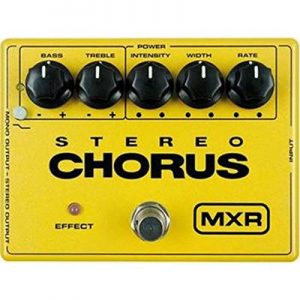 Chorus is a proud member of the modulation family. This effect is often considered outdated, however, it still has its dedicated users. The sound it creates resembles 12 string guitar or a mandolin. For this, the signal is bisected, the first part is slightly altered in pitch, while the second remains untouchable. These two are than unified, producing a doubling effect. Chorus was a shining star in ‘80s and still has that vintage vibe to it. Nirvana fans will be particularly familiar with this bad boy, since “Come As You are” showcases its best features.
Chorus is a proud member of the modulation family. This effect is often considered outdated, however, it still has its dedicated users. The sound it creates resembles 12 string guitar or a mandolin. For this, the signal is bisected, the first part is slightly altered in pitch, while the second remains untouchable. These two are than unified, producing a doubling effect. Chorus was a shining star in ‘80s and still has that vintage vibe to it. Nirvana fans will be particularly familiar with this bad boy, since “Come As You are” showcases its best features.
Once you have chosen the best chorus pedal, you might want to consider various ways of using it. The most ubiquitous one is by combining it with distortion (which should always go before chorus in the chain). This adds extra thickness, movement and dimension to your tone and makes it way more distinctive. You could also employ versatile playing techniques and achieve different results with each of them. For example, you could start with subtle settings for just the touch of the effect and then intensify it until you get spectacular sounds. Chorus pedals can be utilized for splitting the signal between two amps, which is a great addition to already amazing unit. You can experiment as much as you want and come up even more ways of spicing things up. I personally do not understand why so many musicians dislike this effect. For me it will always be a way of bringing back ‘80s nostalgia and combining it with modernism. Just listen to this fella and you will know what I am talking about.
Compressor Pedal
 Compressor pedal is a rather game-changing unit. Before you realize what it does, you are unwilling to dedicate any time or money to this little device. But once you try it out, you cannot imagine your life without it. What is the big deal? – you might ask. The big deal, my friend, is that compressor shapes your sound to perfection. It balances out any uneven frequencies in your tone: tones down any piercing spikes and articulates inaudible low-ends. It delivers studio quality performance in the form of a stompbox. Could it get any better? Yeah, because there is more. A compressor pedal is basically a jack of all trades. It might not seem like it at first glance, but this bad boy can be extremely versatile if utilized properly.
Compressor pedal is a rather game-changing unit. Before you realize what it does, you are unwilling to dedicate any time or money to this little device. But once you try it out, you cannot imagine your life without it. What is the big deal? – you might ask. The big deal, my friend, is that compressor shapes your sound to perfection. It balances out any uneven frequencies in your tone: tones down any piercing spikes and articulates inaudible low-ends. It delivers studio quality performance in the form of a stompbox. Could it get any better? Yeah, because there is more. A compressor pedal is basically a jack of all trades. It might not seem like it at first glance, but this bad boy can be extremely versatile if utilized properly.
What I mean is that it can act as various devices depending on what role you will assign to it. If you shove it in the chain merely for tone shaping, you will suppress the ginormous potential it carries. But once you unleash the beast and let it rage, you will open up the doors of sonic adventures. Firstly, if you are a solo player, you have to own this pedal. It will not let your sound get lost in the mix and attenuate any inaudible parts. In other words, it will define your tone better and give a certain character to it. Secondly, a compressor can act as a boost as well. If you find just the right settings, you will be able to enhance the level of your sound and avoid any drop in volume that can be caused by signal transmission. It can even emphasize the sustain and steep it with more dimension. Last but not least, a compressor will be your lifesaver if you play arpeggios. Due to their sensitivity, it is quite easy to mess everything up. This device will not let that happen and make sure that your performance is even and precise. If this doesn’t convince you to find the best compressor pedal, I do not know what will.
EQ Pedal
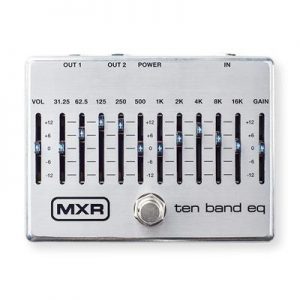 As with compressors, an EQ pedal is not exactly an audio effect. It is more like a tool that shapes different parameters of your sound. Depending on its type, it can modify low, mid and higher frequencies and make sure that your tone is uniform. For this, you will have to tweak several knobs or move around the sliders. This pedal is quite easy to use, but it can deliver life-changing results. If you are care about the clarity, precision and definition of your sound, you have to have at least one of the best EQ pedals on your pedalboard. When you first start listening to what it does, you might not notice any audible changes. But once you unplug this bad boy, you will see how much difference it makes.
As with compressors, an EQ pedal is not exactly an audio effect. It is more like a tool that shapes different parameters of your sound. Depending on its type, it can modify low, mid and higher frequencies and make sure that your tone is uniform. For this, you will have to tweak several knobs or move around the sliders. This pedal is quite easy to use, but it can deliver life-changing results. If you are care about the clarity, precision and definition of your sound, you have to have at least one of the best EQ pedals on your pedalboard. When you first start listening to what it does, you might not notice any audible changes. But once you unplug this bad boy, you will see how much difference it makes.
On that note, it is crucially important to know where to place it in your chain. Since it does not add any noticeable effect to your sound, it can go anywhere you want. You do have the freedom to decide where your favorite EQ pedal belongs. However, if you are striving for the best results, you have three basic options: put this stompbox in the beginning or at the end of your chain or after distortions. The first setup will clean up your signal before it goes through other pedals. This way you will feed pristine and tailored sound to the rest of the chain. The second scenario allows you to shape your tone after it has undergone all the changes. This way you will be able to filter out anything you do not like before your signal hits the amp. The third setup is probably the most ubiquitous one. If distortions muddy up your sound too much or deprive it of definition, an EQ pedal will help you bring back those qualities. No matter which method of placement you choose, this bad boy will make sure that everything is in perfect condition.
Reverb Pedal
 Reverb falls into the category of time-based effects. I will draw a picture for you so that you can understand what it does better. Imagine walking into an empty room. The sound you emit will travel through the surrounding space, get reflected by various surfaces and then get back to your ear. You will hear something that resembles echo. Reverb tries to simulate that sound and bring back the feeling of surroundings in your sound (but it is not the same as echo). This effect was really popular back in the day and was created by specific placement of microphones. This method was used and popularized by legendary Pink Floyd and you can hear reverb in many of their recordings. Naturally, after developing reverb pedals, it caught on even more.
Reverb falls into the category of time-based effects. I will draw a picture for you so that you can understand what it does better. Imagine walking into an empty room. The sound you emit will travel through the surrounding space, get reflected by various surfaces and then get back to your ear. You will hear something that resembles echo. Reverb tries to simulate that sound and bring back the feeling of surroundings in your sound (but it is not the same as echo). This effect was really popular back in the day and was created by specific placement of microphones. This method was used and popularized by legendary Pink Floyd and you can hear reverb in many of their recordings. Naturally, after developing reverb pedals, it caught on even more.
If you are into this effect, you are probably searching for the best reverb pedal out there. But before getting meticulous and picky about various features, you have to know the difference between the types of reverb. Let’s start with hall reverb. This one is pretty easy to understand because the name reveals the nature of this effect. It strives to emulate the reverberating sound you would hear in a concert hall. It is characterized with long resonance which adds multiple dimensions to your tone. Next comes the room reverb. As you have probably already guessed, this one is a more mundane version of the hall reverb. In this case, we have way less feedback and faster, less distinctive reverberations. No matter where you play, this will create the illusion that your sound was recorded in a small room. Let’s move on to the plate reverb. This one tries to replicate the sound created by special reverb plates, that were used before all those fancy devices were brought to the market. Plate reverb tends to be thinner than the hall reverb, steeped with two-dimensional character. Last but not least, we have spring reverb. This bad boy relies on the reverberation created by spring coils (utilized in the abovementioned plates). It has the ability to feedback in itself, which creates a distinctive, ringing sound. That’s it. I am sure you will not be confused by these names anymore.
Volume Pedal
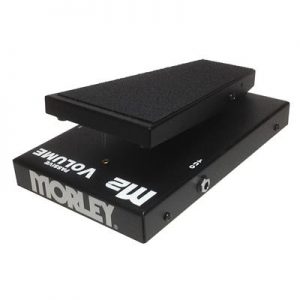 The volume pedal is probably the simplest out of the stompboxes we have discussed so far. It is basically a volume control of your instrument in the form of an electronic device. It alters the level of the signal and avoids any tone loss. The fact that it is a pedal, makes it super easy to control during performances and allows you to have everything in shape. Plus, it lets you get creative. A volume pedal can be utilized for creating volume swells, act as a boost or do expression pedal job as well. One way or another, this unit is a perfect fit for anybody who wants their sound to be precise and elaborate.
The volume pedal is probably the simplest out of the stompboxes we have discussed so far. It is basically a volume control of your instrument in the form of an electronic device. It alters the level of the signal and avoids any tone loss. The fact that it is a pedal, makes it super easy to control during performances and allows you to have everything in shape. Plus, it lets you get creative. A volume pedal can be utilized for creating volume swells, act as a boost or do expression pedal job as well. One way or another, this unit is a perfect fit for anybody who wants their sound to be precise and elaborate.
Is there anything else this device can offer? Yes, there is. Even though the majority of them are quite straightforward and do not do anything else, the best volume pedals do come with a set of useful features. Some of them have a Minimum Volume knob, which allows you to adjust the level of the device when it is set to its lowest value. This gives you a lot more precision than a mere footswitch. Some have tuner outputs, that basically combines two pedals in one. This way you can have your instrument perfectly in tune while controlling the volume like a pro. The drawback of tuner outputs is that they might suck your tone a bit. You might even have the option to adjust the tension of the taper. For me, this is the most significant parameter when looking for a volume pedal. If the taper is too stiff, it is usually quite hard to achieve the results you want. If it is too sensitive, you will get an uneven sound. So it is always better to have a customizable taper tension and tailor your device to your preferences. Last but not least, some volume pedals can produce various effects, such as wah. All in all, this unit is a must-have if you are striving for a professional tone.
Tremolo Pedal
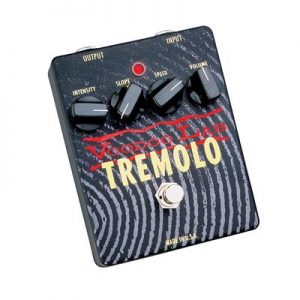 Tremolo is an audio effect that relies on the oscillation of volume or the amplitude of the wave. By fluctuating the level of various frequencies, it creates a sort of “trembling” sound. It can be paired with other effects for maximum results. Tremolo makes it incredibly easy to create outstanding, earth-shattering sounds. It alters your tone beautifully and makes it unforgettable. Finding the best tremolo pedal is quite hard these days, because there is an abundance of choices and variations. However, you cannot really start searching until you know for sure that it is not the same as vibrato. The misconception about their similarity burst out when Fender propagated the Stratocaster’s vibrato system as tremolo. In reality, vibrato is created by altering the pitch of the audio signal, which has movement and dynamics. Due to this reason, the sonic distinction between the two is quite audible. Tremolo is more intense, while vibrato is rhythmical.
Tremolo is an audio effect that relies on the oscillation of volume or the amplitude of the wave. By fluctuating the level of various frequencies, it creates a sort of “trembling” sound. It can be paired with other effects for maximum results. Tremolo makes it incredibly easy to create outstanding, earth-shattering sounds. It alters your tone beautifully and makes it unforgettable. Finding the best tremolo pedal is quite hard these days, because there is an abundance of choices and variations. However, you cannot really start searching until you know for sure that it is not the same as vibrato. The misconception about their similarity burst out when Fender propagated the Stratocaster’s vibrato system as tremolo. In reality, vibrato is created by altering the pitch of the audio signal, which has movement and dynamics. Due to this reason, the sonic distinction between the two is quite audible. Tremolo is more intense, while vibrato is rhythmical.
Apart from some essentials, there are certain additional features that make any tremolo pedal stand out. I will briefly touch up on some necessities: Rate and Depth are the most basic controls and without them it would be impossible to create the effect itself. They modify the speed and intensity of the tremolo and allow you to tailor it to your preferences. We also have a volume knob, which is quite self-explanatory. Now, additional features include adjustable waveforms and extra effects. The former means that you can choose between sine, triangle, square, or sawtooth (sharkfin) waves, which gives you even more precision and control over your tone (Fulltone Supa-Trem ST-1 or Diamond Pedals Tremolo). The latter indicates that you have the option to combine tremolo with other effects and receive unique results. For instance, Catalinbread Antichthon combines tremolo with fuzz (a.k.a. fuzzolo) and produces ethereal sounds. Be it a fancy pedal or a simple one, tremolo is a wonderful effect that awakens creativity and lets you be innovative.
Looper Pedal
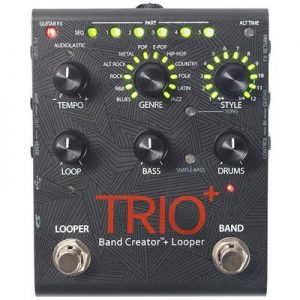 Looper is probably the most adventurous and versatile out of all the devices. It records the piece you perform, then plays it back and creates the sense of repetition. This thickens up your sound and adds rhythm to it. A single looper can drastically improve your performance and make it stand out. It can be utilized in any genre, from pop to metal. This unit is best suited for those who want to replicate the band sounds during solo performances. This way you can easily be a single-man-band and rock any stage! Even though the best looper pedal is quite hard to find, if you know what to look for, it will be a piece of cake. So let’s dive right into it!
Looper is probably the most adventurous and versatile out of all the devices. It records the piece you perform, then plays it back and creates the sense of repetition. This thickens up your sound and adds rhythm to it. A single looper can drastically improve your performance and make it stand out. It can be utilized in any genre, from pop to metal. This unit is best suited for those who want to replicate the band sounds during solo performances. This way you can easily be a single-man-band and rock any stage! Even though the best looper pedal is quite hard to find, if you know what to look for, it will be a piece of cake. So let’s dive right into it!
First and foremost, no matter how many fancy features this device owns, if the recording quality sucks, nothing else will make sense. Everything you do will go up in smoke and ruin all the efforts you make. In order to avoid this, you should look for a looper with the great recording quality. This way it will maintain the clarity of your sound while playing back your pieces beautifully. Secondly, are you looking for something simple or you want a looper that offers maximum control over your tone? If the former is perfectly enough for you, you can easily go several-knob option. If not, then search for the unit that has at least Tap Tempo, Reverse, Overdub and Undo/Redo functions. And finally, I am sure you want your masterpieces to be saved. For this, you should look for a looper that has enough loop storage and a long recording time. Sometimes, even 6 minutes are quite enough, but it is always better to have more options on hand. No matter which model you choose, a looper pedal will definitely change the way you perceive your music.
Fuzz Pedal
 And we are back to good ol’ distortion. Fuzz is the most rebellious member of this family. It is created due to severe clipping of the signal, which produces gritty, dirty sounds. This effect is saturated with girth and heaviness, which is what makes it so special. The fuzziness of such kind of distortion is largely used in metal and other genres of that ilk. Paul McCartney, Jimi Hendrix, Carlos Santana and many other legendary musicians employed this effect in their performance, making it unforgettable. A simple fuzz pedal can make your ears bleed (in a good way), disturb your neighbors and crack some windows if used heavily. It will definitely burn the whole stage with its fire, extreme gain and sustain. Whether you are into such kind of mind-blowing effects or not, you have to try it out at least once. And I am sure, it will convince you to commence the search of the best fuzz pedal right away.
And we are back to good ol’ distortion. Fuzz is the most rebellious member of this family. It is created due to severe clipping of the signal, which produces gritty, dirty sounds. This effect is saturated with girth and heaviness, which is what makes it so special. The fuzziness of such kind of distortion is largely used in metal and other genres of that ilk. Paul McCartney, Jimi Hendrix, Carlos Santana and many other legendary musicians employed this effect in their performance, making it unforgettable. A simple fuzz pedal can make your ears bleed (in a good way), disturb your neighbors and crack some windows if used heavily. It will definitely burn the whole stage with its fire, extreme gain and sustain. Whether you are into such kind of mind-blowing effects or not, you have to try it out at least once. And I am sure, it will convince you to commence the search of the best fuzz pedal right away.
Speaking of which, you might sit there wondering, what are the parameters that, in combination, deserve the name of the best? What makes the best fuzz pedal so desirable? Generally, there are certain features that, when combined, do truly make the magic happen and are worth every penny. Let’s start with Durability. When you spend so much money on electronic devices, it is only natural that you expect them to last. That is why durability and good build quality are so important. Of course, higher-end fuzz pedals will stand the test of time better, but there are also some cheaper variations that could withstand a lot of abuse. Then comes the Affordability. I am sure you are looking for something that offers great features and can be purchased without breaking the bank. Luckily, there is an abundance of such devices on the market (do not let the price deceive you though, dig deep into the features they offer). And lastly, Germanium or Silicon fuzzes. These are more on the technical side, however, they make a huge impact on the sound. The former has a softer, more vintage tone, while the latter offers intense fuzz and is way more durable. Just be careful and do your research before making the final decision!
Phaser Pedal
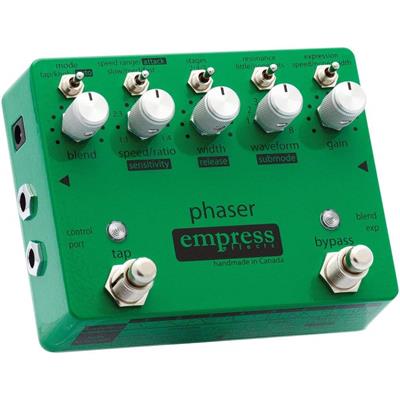 Phaser (a.k.a. phase shifting) is also one of the most ubiquitous effect. It bisects the signal between two paths, passes one part through an all-pass filter, that maintains the amplitude of the original frequencies but changes the phase. When affected part is mixed with the dry one, the frequencies that are out of phase eliminate each other, creating the notches in waves. These notches are what make phaser’s sound so characteristic and unique. The amount of phase modification is totally dependent on the frequency range, while the depth of the notches is determined by the ratio. Phase-shifting belongs to the modulation effects and is often mixed up with flangers, however, these are two different effects and should never be considered as the same thing.
Phaser (a.k.a. phase shifting) is also one of the most ubiquitous effect. It bisects the signal between two paths, passes one part through an all-pass filter, that maintains the amplitude of the original frequencies but changes the phase. When affected part is mixed with the dry one, the frequencies that are out of phase eliminate each other, creating the notches in waves. These notches are what make phaser’s sound so characteristic and unique. The amount of phase modification is totally dependent on the frequency range, while the depth of the notches is determined by the ratio. Phase-shifting belongs to the modulation effects and is often mixed up with flangers, however, these are two different effects and should never be considered as the same thing.
The early stages of this effect are also connected to misconceptions. Flanger utilized in the record “Itchycoo Park” by Small Faces was considered a phaser for a long time. However, with the further development of the said effect, this misunderstanding faded away gradually. In 1968, Fumio Mieda brought out an effect pedals, which offered both phase shifting and chorus. This triggered the popularization of phasers and was quickly caught on by a lot of musicians, such as Jimi Hendrix and Robin Tower. Later on, MXR Phase 90 was created, which implemented the pedal version of the effect. This particular device was widely employed by Eddie Van Halen and is connected to his name till this day (especially after their collaboration). Phase shifting can be heard on records, such as “Sheer Heart Attack” by Brian May, “Paranoid Android” and “The Tourist” by Radiohead. These tracks would not have been so legendary if the guitarists from the above-mentioned bands had not performed with the best phaser pedals. The only thing standing between you and your own outstanding sound is a click. Do not waste any more time and let this amazing effect turn your world upside down.
Octave Pedal
 This one will be particularly interesting for all those Jimi Hendrix fans out there. If you have ever been obsessed with Purple Haze, then you have to keep on reading vigorously. An octave was the core effect he utilized in his performances, which largely contributed to its popularization. This bad boy mixes your initial signal with its octave higher/lower replica. It basically messes up with the frequencies, some of them get divided, while some of them get doubled. This produces somewhat synthesized tone. In order to achieve this effect, Jimi utilized a pedal named Octavia (designed by Roger Mayer). Was it the best octave pedal out there? It probably was, at least at the time. The majority of the brands quickly caught on the trend and brought out their own variations. Due to this reason, nowadays the market teems with octave pedals with various features to offer.
This one will be particularly interesting for all those Jimi Hendrix fans out there. If you have ever been obsessed with Purple Haze, then you have to keep on reading vigorously. An octave was the core effect he utilized in his performances, which largely contributed to its popularization. This bad boy mixes your initial signal with its octave higher/lower replica. It basically messes up with the frequencies, some of them get divided, while some of them get doubled. This produces somewhat synthesized tone. In order to achieve this effect, Jimi utilized a pedal named Octavia (designed by Roger Mayer). Was it the best octave pedal out there? It probably was, at least at the time. The majority of the brands quickly caught on the trend and brought out their own variations. Due to this reason, nowadays the market teems with octave pedals with various features to offer.
Because of the sonic qualities of this little fella, it is often mixed up with harmonizers and pitch shifters. But trust me, they are far cry from each other. As you already know, the octave strives to create the sound that is an octave (in certain cases, sub octave) higher/lower compared to the original. In comparison, pitch shifters are way more meticulous. They do not limit themselves to octaves. This means that they allow you to modify the pitch of your sound by a note or a sub-note. In other words, they alter more precise and detailed parameters in your tone. When it comes to harmonizers, they are a completely different story. Instead of shifting the pitch or messing with the octaves, they mix several notes that are in harmony, creating the sound that is reminiscent of duet singing. It is that simple. I know this can get too technical sometimes, but if you are serious about your sound, you have to be aware of the smallest details of your tone.
Flanger Pedal
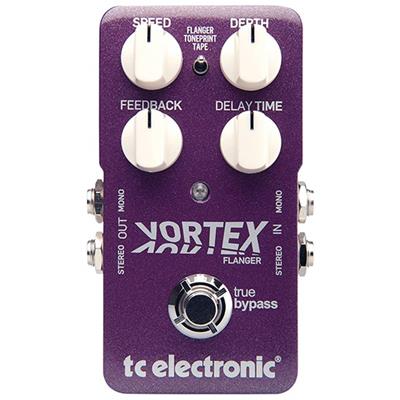 We could easily say that flanger is the most hated effect in music. This might be a bit surprising if you are a fan of this one. However, that is the reality. The reason for such kind of bad attitude and loathing is that flanger can overpower your sound and deprive it of original qualities. If you do not know the correct utilization, you could easily get detrimental results. But there is one small detail: flanger is a beast and it can be tamed. You should treat this effect carefully, just as you would caress the snake to calm it down. Once you get the hang of it, you will have wonderful sonic adventures ahead of you. You might be wondering how it alters your tone. Well, flanger pedal splits your signal in two, delays a part of it and then mixes it back with the original. The delayed tone oscillates and, thus, produces a swooping effect. This is caused by all the peaks and notches that are created in the sound wave. This bad boy can saturate your music with movement and dynamics, which, in the end, results in distinctive tone. Oftentimes, (with certain settings) the affected signal is fed back into the input of the device, generating the feedback (i.e. resonance). By doubling the amount of peaks and throughs, you can thicken up your sound and add more depth to it. This means that possessing the best flanger pedal on the market will provide you with an array of possibilities and make your performance unique. As I have already mentioned, this effect is a bit hard to nail so it is not for the faint-hearted. Are you up for a challenge?
We could easily say that flanger is the most hated effect in music. This might be a bit surprising if you are a fan of this one. However, that is the reality. The reason for such kind of bad attitude and loathing is that flanger can overpower your sound and deprive it of original qualities. If you do not know the correct utilization, you could easily get detrimental results. But there is one small detail: flanger is a beast and it can be tamed. You should treat this effect carefully, just as you would caress the snake to calm it down. Once you get the hang of it, you will have wonderful sonic adventures ahead of you. You might be wondering how it alters your tone. Well, flanger pedal splits your signal in two, delays a part of it and then mixes it back with the original. The delayed tone oscillates and, thus, produces a swooping effect. This is caused by all the peaks and notches that are created in the sound wave. This bad boy can saturate your music with movement and dynamics, which, in the end, results in distinctive tone. Oftentimes, (with certain settings) the affected signal is fed back into the input of the device, generating the feedback (i.e. resonance). By doubling the amount of peaks and throughs, you can thicken up your sound and add more depth to it. This means that possessing the best flanger pedal on the market will provide you with an array of possibilities and make your performance unique. As I have already mentioned, this effect is a bit hard to nail so it is not for the faint-hearted. Are you up for a challenge?
Boost Pedal
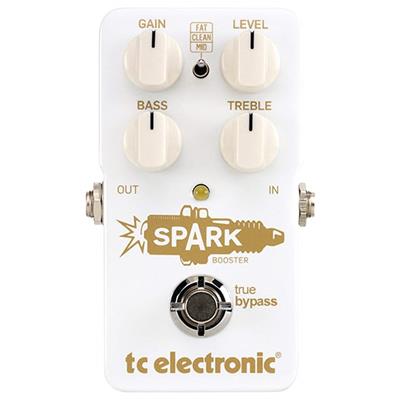 Do you want to add an extra “oomph” to your sound? Are you willing to make every single note audible? If so, you have to own a boost pedal. Do not think of it as your typical volume pedal, because it does way more than modifying the level of your sound. Imagine that the maximum volume capacity of your tone is 10. A boost pedal can increase that number to 20. In other words, this device amplifies and attenuates your signal without adding any color to it. It does not distort your sound, however, it can cause your preamp to drive harder. There are numerous ways of utilizing the best boost pedal, but I will list several of them so that you have a rudimentary understanding of what to do with this unit.
Do you want to add an extra “oomph” to your sound? Are you willing to make every single note audible? If so, you have to own a boost pedal. Do not think of it as your typical volume pedal, because it does way more than modifying the level of your sound. Imagine that the maximum volume capacity of your tone is 10. A boost pedal can increase that number to 20. In other words, this device amplifies and attenuates your signal without adding any color to it. It does not distort your sound, however, it can cause your preamp to drive harder. There are numerous ways of utilizing the best boost pedal, but I will list several of them so that you have a rudimentary understanding of what to do with this unit.
First of all, if you are in a band, this little fella will be your essential tool. Different instruments might sometimes overpower each other and overlap the sound of one another. In this case, the features of your performance will be lost to the audience. To avoid such a detrimental turn of events, you can simply implement a boost pedal into your signal chain. This device can be a ginormous asset during solos as well. It will let your sound cut through the mix and define its greatest properties even more. Second of all, if you are a fan of tube overdrive, a boost pedal will be your magic wand. As I have already mentioned, it can drive your preamp harder and result in a subtle, vintage overdrive. It can also add gain to your distortion pedals and make the effect even heavier. And finally, a boost pedal will be your lifesaver if you have long signal chain. With all the cables and stompboxes of various ilk, a signal can easily lose its integrity and sonic qualities. To prevent this from happening, just place the boost pedal at the beginning of your setup and you will be good to go. Splurging for this unit is anything but risky, because there is no way in which it can ruin your sound.
Noise Gate Pedal
 When you have played your instrument long enough, you know what a badgering bastard noise can be. You think you have everything under control, when, out of nowhere, you hear some hiss or hum. Oftentimes, it feels like it is impossible to get rid of it, but everything is perfectly feasible, my friend. You just have to own the best noise gate pedal. This unit will eliminate any unwanted feedback or sound and maintain the clarity of your tone. It will make your performance more professional and crank things up a notch. It has the simplest controls of all, however, it is not that easy to utilize. There are certain factors that should be taken into consideration. Even though this device is a godsend miracle, it is not almighty. In order for it to operate properly, the level of the noise should be at least 60Hz. Anything lower than that will be impossible to discern and, thus, take care of. Plus, it is crucially important to know what causes all that hum in your chain. If the source is a jagged cable or and obsolescent pedal, a noise gate will be unable to do anything (and it does not have to). Make sure that all the electronics are in perfect condition before searching the help in other things. When it comes to the signal chain, it all comes to your preferences. There are numerous ways of setting up this pedal, however, two of them are the most ubiquitous. The first one implies that the noise gate should go at the end of the chain (before delays and reverbs). This way it will clean up the overall signal and eliminate unwanted sounds. The second one suggests to put this device right after your noisy pedals (distortions, fuzzes…) or amps. This way you will be able to get rid of the hum right at the source of it and prevent it from spreading. In short, a noise gate, if utilized correctly, will give you the most elaborate results.
When you have played your instrument long enough, you know what a badgering bastard noise can be. You think you have everything under control, when, out of nowhere, you hear some hiss or hum. Oftentimes, it feels like it is impossible to get rid of it, but everything is perfectly feasible, my friend. You just have to own the best noise gate pedal. This unit will eliminate any unwanted feedback or sound and maintain the clarity of your tone. It will make your performance more professional and crank things up a notch. It has the simplest controls of all, however, it is not that easy to utilize. There are certain factors that should be taken into consideration. Even though this device is a godsend miracle, it is not almighty. In order for it to operate properly, the level of the noise should be at least 60Hz. Anything lower than that will be impossible to discern and, thus, take care of. Plus, it is crucially important to know what causes all that hum in your chain. If the source is a jagged cable or and obsolescent pedal, a noise gate will be unable to do anything (and it does not have to). Make sure that all the electronics are in perfect condition before searching the help in other things. When it comes to the signal chain, it all comes to your preferences. There are numerous ways of setting up this pedal, however, two of them are the most ubiquitous. The first one implies that the noise gate should go at the end of the chain (before delays and reverbs). This way it will clean up the overall signal and eliminate unwanted sounds. The second one suggests to put this device right after your noisy pedals (distortions, fuzzes…) or amps. This way you will be able to get rid of the hum right at the source of it and prevent it from spreading. In short, a noise gate, if utilized correctly, will give you the most elaborate results.
Expression Pedal
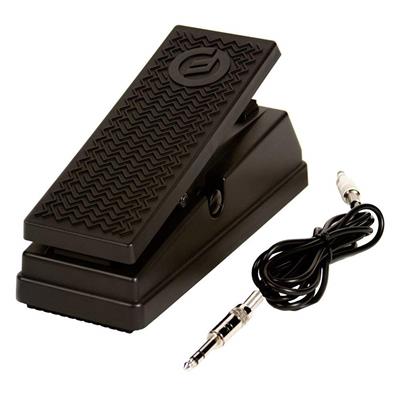 An expression pedal is more like an additional tool rather than an individual effect. It does not interfere with your sound at all, which is the reason why it is often overlooked. For me, an expression pedal means more control, flexibility and ease of use. It is basically a knob in the form of a stompbox. You can plug it in any compatible pedal and modify the desired parameter. It eliminates the need to constantly reach for your units during live performance and allows you to adjust everything on the fly. If you have been on stage at least once, you know how important that can be. For this reason, an expression pedal will be a significant asset for any musician.
An expression pedal is more like an additional tool rather than an individual effect. It does not interfere with your sound at all, which is the reason why it is often overlooked. For me, an expression pedal means more control, flexibility and ease of use. It is basically a knob in the form of a stompbox. You can plug it in any compatible pedal and modify the desired parameter. It eliminates the need to constantly reach for your units during live performance and allows you to adjust everything on the fly. If you have been on stage at least once, you know how important that can be. For this reason, an expression pedal will be a significant asset for any musician.
Since this unit is quite straightforward, it is hard to articulate which features make up the best expression pedal. They do not offer a lot of versatility and mostly come with tapers (they look similar to volume pedals and wahs). However, there are certain models that have some additional properties. For instance, some of them can combine volume pedal functionality, which means you will get two-in-one deal. Some of them might have a Polarity Switch. This little fella makes sure that your expression is compatible with other devices. If it does not interact well with other members of the chain, the whole point of owning one is lost.
This bad boy comes in two basic forms: active and passive variations. The former indicates that it utilizes electronic. The latter employs potentiometers and does not require any power supply, which reduces the amount of cables and batteries you will need. However, passive expression pedals can suck your tone, so choose them carefully. After all, we are looking for convenience and improvement, not the ruined tone.
Vibrato Pedal
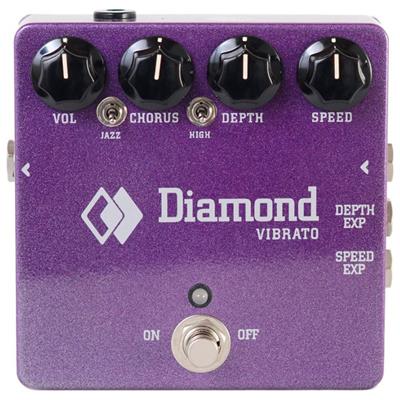 If you have read this article carefully, you are already familiar with this effect. I have touched upon some of its basics, but as the saying goes: repetition is the mother of all learning. A vibrato relies on pitch alterations in order to create a “vibrating” sound. It changes the frequencies periodically and produces a rhythmical tone with a great deal of movement. In that sense, vibrato is way more natural compared to tremolo, but they both emulate the sense that multiple instruments are being played. Even though you do not need much to create this effect, there are certain features that give you more control and are necessities if we are talking about the best vibrato pedal.
If you have read this article carefully, you are already familiar with this effect. I have touched upon some of its basics, but as the saying goes: repetition is the mother of all learning. A vibrato relies on pitch alterations in order to create a “vibrating” sound. It changes the frequencies periodically and produces a rhythmical tone with a great deal of movement. In that sense, vibrato is way more natural compared to tremolo, but they both emulate the sense that multiple instruments are being played. Even though you do not need much to create this effect, there are certain features that give you more control and are necessities if we are talking about the best vibrato pedal.
I will start with essentials. The combination of Speed (a.k.a. Rate) and Depth is mostly enough for producing this effect. The former modifies how fast the sweeps will vibrate, while the latter adjusts the intensity. These two can easily be everything you will need, however, more control always means more precision and accuracy. That is why we are moving on to more interesting features. Some pedals have the option of modifying the Rise. It enables you to adjust how fast your vibrato will reach its maximum peak. You can either enhance it gradually or fasten it up for more movement. This feature will be particularly handy for those who love to scrutinize even the smallest details in their sound. Some pedals might come with additional effects, chorus, for instance. It suits vibrato perfectly and leaves you with amazing results. No matter how picky you are, the combination of these features will satisfy all your needs and give you much more than you expected.
Tuner Pedal
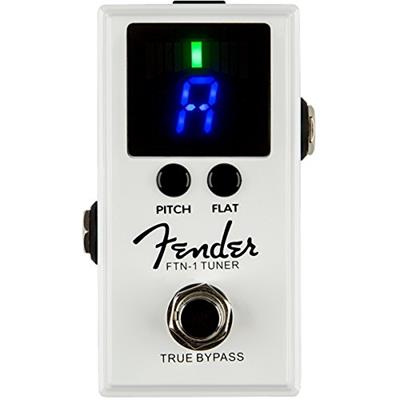 A tuner is probably the most essential pedal on your pedalboard. Everything you do will be nonsensical unless your instrument is accurate. This device makes sure that the notes you play are correct and are not shifted in pitch. This way, you will be able to control your playing more precisely and, consequently, achieve better results. Tuners come in all shapes and sizes, however, their pedal variations are particularly convenient for those who employ an array of stompboxes in their performance. You just plug the best tuner pedal in front of your chain and that is it. Speaking of which, this device operates and tracks better if it receives pristine signal. This allows it to discern the piece you play better and act accordingly.
A tuner is probably the most essential pedal on your pedalboard. Everything you do will be nonsensical unless your instrument is accurate. This device makes sure that the notes you play are correct and are not shifted in pitch. This way, you will be able to control your playing more precisely and, consequently, achieve better results. Tuners come in all shapes and sizes, however, their pedal variations are particularly convenient for those who employ an array of stompboxes in their performance. You just plug the best tuner pedal in front of your chain and that is it. Speaking of which, this device operates and tracks better if it receives pristine signal. This allows it to discern the piece you play better and act accordingly.
Tuner pedals display whether your pitch is correct or not using analog needle-dial, LED or LCD screens. This contributes to visibility even on the darkest stages and makes their utilization even easier. Simple tuners can perceive only several notes, and correct either one pitch (A or E) or several (E, A, D, G, B, E). More high-end devices offer chromatic tuning, which indicates on the number of pitches (i.e. 12) they can tune. They are definitely way more accurate and are able to correct any uneven notes. Monophonic tuners can track only simple notes, while Polyphonic variations can discern even complicated chords. If your performance relies on the latter, the monophonic tuner will simply disappoint you. If not, it will be perfectly enough for you. One way or another, a tuner pedal is a must-have by all standards and is an integral part of professional performance.
Acoustic Guitar Preamp
 An acoustic guitar preamp is probably the most useful tool for acoustic electric guitar players. If you have played this instrument at least once, you probably know that its pickups tend to make your sound artificial. Those clean tones you play come out as uneven and unnatural. This device prevents that from happening. Plus, the signal coming out of your instrument might not be strong enough to be “perceivable” for an amp. An acoustic guitar preamp will change your sound a bit, make it stronger and richer before it hits the amp. This way all those acoustic properties will be maintained and even enhanced.
An acoustic guitar preamp is probably the most useful tool for acoustic electric guitar players. If you have played this instrument at least once, you probably know that its pickups tend to make your sound artificial. Those clean tones you play come out as uneven and unnatural. This device prevents that from happening. Plus, the signal coming out of your instrument might not be strong enough to be “perceivable” for an amp. An acoustic guitar preamp will change your sound a bit, make it stronger and richer before it hits the amp. This way all those acoustic properties will be maintained and even enhanced.
Some of the best acoustic guitar preamps come with mic’d function. This means that they can emulate the sound of a professional microphone without the need of owning one. This is a great feature for those who perform from venue to venue but do not want to carry around all their gear. Some of them may even come with tuner, EQ (three band, five band or parametric) or a booster. This basically combines all the essential tools in one and allows you to control various parameters of your sound on the fly. Tuner will correct the pitch of your instrument, EQ will balance out different frequencies and give you to option to attenuate desirable ranges, while booster will make your signal more powerful. Some acoustic guitar preamps come with notch filters. This is probably the most badass feature of all. They eliminate any unwanted feedback in your tone and make sure that everything is in perfect condition. This device will not leave your pedalboard once it gets there, because it can truly change your game. An acoustic guitar preamp is not a cheap device, however, it is money well spent.
Multi-Effects Pedal
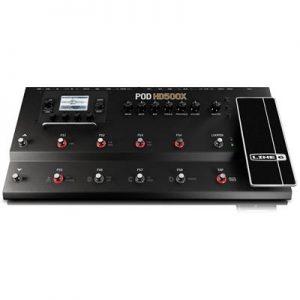 If you are tired of purchasing a dedicated pedal for each effect and the mess this creates on your pedalboard, it might be a good option to go for a multi-effects processor. It is hard to articulate how much it simplifies the setup and how much money it can save. This unit combines numerous effects in a single body and allows you to be as adventurous as you want. A multi-effects pedal is basically everything you ever wanted and a bit more. It is not easy to tweak and control, however, once you nail all the settings, you will have an almighty beast right at your feet. It offers versatility, flexibility and convenience. What else could you ask from a single device?
If you are tired of purchasing a dedicated pedal for each effect and the mess this creates on your pedalboard, it might be a good option to go for a multi-effects processor. It is hard to articulate how much it simplifies the setup and how much money it can save. This unit combines numerous effects in a single body and allows you to be as adventurous as you want. A multi-effects pedal is basically everything you ever wanted and a bit more. It is not easy to tweak and control, however, once you nail all the settings, you will have an almighty beast right at your feet. It offers versatility, flexibility and convenience. What else could you ask from a single device?
Modern units set such a high bar when it comes to the sound quality and overall performance, that it is hard to win the name of the best multi-effects pedal. Even though it is arduous, several brands still manage to accomplish this task. How exactly, you might wonder… By expanding their vision and thinking out of the box, that is how. But still, what makes up a great multi-effects processor? The answer to this question is multifarious and combines a number of audio effects and amp simulations, tone-shaping options, onboard presets loopers and tuners. If a single device is equipped with all of these features, has robust chassis and performs perfectly in every situation, it can easily be called the best one. It is rather easy to get triggered by the amount of effects and amp simulations, however, the number is not the most important determinant here. You have to make sure that they are usable, accentuate your sound and improve its properties. If this requirement is satisfied, then you can go on being picky and dig even deeper. A multi-effects processor is a great tool for practicing, especially for beginners. However, professionals will benefit from it as well. Just go out there and try it and you will know what I am talking about.
Guitar Pedalboard
As you read the label of this part of the article, you might start wondering, who needs a pedalboard and why are we even talking about it. Well, the answer is quite simple, my friend. Everybody needs it and here is why: a pedalboard turns the organization of your pedals into an enjoyable process. It combines the convenience and ease of usage and substantially reduces the time spent on setting up stompboxes. By placing all your pedals on your pedalboard, you can easily carry them around mounted on the surface and have them ready anytime. Plus, it makes sure that nothing flies off the stage into the universe or right in the face of your fans. In short, if you find the best guitar pedalboard, do not let go of it.
If you still think that this piece of equipment is an unnecessary waste of money, think twice as I list down all the properties you should look for. First and foremost, you should watch out for Durability and Build Quality. These two are important with any unit but they are even more significant when it comes to pedalboards. They must be able to undertake heavy stomping, hold everything in place and withstand numerous pedals. If you have frequent gigs, go for aluminum, plywood or hard plastic material. Second of all, you must always consider the Size. Depending on the amount of pedals you own, you will need various pedalboards. On the whole, they can hold 4 to 12 stompboxes. Last but not least, you have to choose between Powered and Unpowered variations. The first one implies that it comes with power supply and all the needed cables, while the second indicates that it provides merely the surface for your pedals. They both have their pros and cons, plus it depends on what you are looking for. But one thing is clear as day: you need a pedalboard in your gear and you need it right now!
Bass Distortion Pedal
 I think we have praised guitar pedals enough. Now it is time to go low, way lower than you’d think. Yes, we are now talking about bass pedals, namely distortion. This is probably my favorite one. There is something very special about distorted bass. It sounds dirty, beautiful and mind-blowing at the same time. This effect works perfectly with your bottom end, accentuates its best properties and makes it shine. If you dare to play bass solos, you have to give distortion a shot. It will allow you to create unique pieces and stand out in the mix. If you find the best bass distortion pedal, it will be the most powerful addition to your gear and will quickly turn into a secret weapon.
I think we have praised guitar pedals enough. Now it is time to go low, way lower than you’d think. Yes, we are now talking about bass pedals, namely distortion. This is probably my favorite one. There is something very special about distorted bass. It sounds dirty, beautiful and mind-blowing at the same time. This effect works perfectly with your bottom end, accentuates its best properties and makes it shine. If you dare to play bass solos, you have to give distortion a shot. It will allow you to create unique pieces and stand out in the mix. If you find the best bass distortion pedal, it will be the most powerful addition to your gear and will quickly turn into a secret weapon.
The most important question that is asked rather frequently is if you need dedicated pedals for bass. Answer to this is set in stone: if you want your sound to be professional, then you have to splurge on distortion pedal that is specifically designed for bass. Such kind of unit knows exactly how to treat low frequencies. It attenuates them and adds effect without depriving your sound of integrity and definition. You could still employ guitar pedals with bass, however, some of them might completely ruin your tone. Bass distortion pedals are quite easy to control, however, there is one simple rule you must follow: do not get overboard with gain. It will assimilate your sound to that of others in your band and make it hard to stand out in the mix. The solution to this issue is a Blend knob. It will mix your original bottom-end with affected signal and, therefore, accentuate that blissful bass of yours. That is all you need for creating the most ethereal bass distortion. In my book, when it comes to your sound, you do not have the right to be parsimonious, just grab this unit and let the world know who is the real king of bass.
Bass Overdrive Pedal
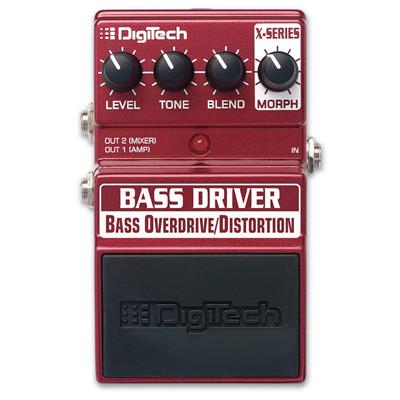 Bass overdrive is very similar to its guitar variation. It distorts your sound subtly and offers warm, vintage tones. This effect is for those who like small amount of dirt but do not want to get too crazy. Plus, it can be more flexible than its heavier siblings and provide you with various sonic possibilities. Bass overdrive has a unique nature that cannot be compared to anything else. It is saturated with mild girth, sweetness and perfection. This effect can accentuate the nature of bass beautifully and awaken those creative juices.
Bass overdrive is very similar to its guitar variation. It distorts your sound subtly and offers warm, vintage tones. This effect is for those who like small amount of dirt but do not want to get too crazy. Plus, it can be more flexible than its heavier siblings and provide you with various sonic possibilities. Bass overdrive has a unique nature that cannot be compared to anything else. It is saturated with mild girth, sweetness and perfection. This effect can accentuate the nature of bass beautifully and awaken those creative juices.
In order to nail the most perfect sound, the best bass overdrive must have a set of needed controls. Let’s start with Level. It gives you the ability to modify the volume of the overall output and makes sure that everything is audible to the audience. Since bass is not a stand-alone instrument, this control will help you match its level to the rest of the band. Then comes the Tone (a.k.a. EQ). This bad boy allows you to balance out various frequencies, accentuate bass and tone down treble. This feature is particularly handy for bass players, because it underlines the nature of your instrument and adds definition to your sound. The next is, of course, Gain (Drive). This control is responsible for producing the overdrive. Along with thickening up your signal and enhancing its strength, gain lets you increase the girth and distort everything even more. It can go from mild to extreme and give you a number of sonic options. Last but definitely not the least, we have the Blend. I have already mentioned how great this control can be but I will reinstate this idea once again. This feature enables you to mix your dry and affected signals and therefore increase bass presence. Some models might come with additional tweakable parameters, however, the ones I have discussed are the basics to any pedal and will give you a great deal of control no matter what.
Bass Compressor Pedal
 We have already discussed how amazing guitar compressors can be. They even out your sound perfectly and provide you with a smoother, more professional sound. The same rules apply when it comes to bass compressor pedals, except for the fact that they are even more useful for the said instrument. Due to the specific characteristics of bass, some playing techniques may result in unbalanced output. Plus, low-end may sometimes fade out and lose its integrity. Bass compressor pedal will not let that happen and will attenuate the bottom-end, while toning down squeaky high-end frequencies. This way the nature of bass will be more distinctive and easily audible for the audience. You should not get overboard, though. Applying too much compression to your signal might deprive your sound of dynamics and texture. And that might be exactly what you were going for. Spend as much time as you can experimenting with the pedal and eventually you will get the hang of it.
We have already discussed how amazing guitar compressors can be. They even out your sound perfectly and provide you with a smoother, more professional sound. The same rules apply when it comes to bass compressor pedals, except for the fact that they are even more useful for the said instrument. Due to the specific characteristics of bass, some playing techniques may result in unbalanced output. Plus, low-end may sometimes fade out and lose its integrity. Bass compressor pedal will not let that happen and will attenuate the bottom-end, while toning down squeaky high-end frequencies. This way the nature of bass will be more distinctive and easily audible for the audience. You should not get overboard, though. Applying too much compression to your signal might deprive your sound of dynamics and texture. And that might be exactly what you were going for. Spend as much time as you can experimenting with the pedal and eventually you will get the hang of it.
There are certain technical words that might confuse you when you take your first look at a compressor pedal. But there is nothing that difficult about them. I will explain most of them in depth and make sure that you understand your device to its core. Let’s start with Threshold. This is a margin, a level at which the effect will take place. Any frequency below (or above) that range will be compressed. Tweaking this control will help you choose exactly what you want to cut off and apply the effect accordingly. The next one is Ratio. This bad boy determines the intensity of the compression. The higher the settings, the heavier this effect will be. Now we have Attack and Release. The former defines how fast the compression will take place, while the latter sets the speed of decompression. One more feature you might come across is Make-up Gain. Due to the circuitry of this device, it tends to drop the overall volume. This is where this parameter comes into play. It regenerates the lost output and returns the volume to its initial settings. If you do not already own the best bass compression pedal, I have no idea what you are waiting for.
Bass Chorus Pedal
 You already know what a chorus pedal is. But the one we have talked about before was made for electric guitar. Things are a bit different when it comes to bass. In order for this effect to operate properly, the unit should be able to recognize the bottom-end perfectly. Bass dedicated one has a special circuit which eliminates that problem and adds the said effect without sabotaging the bass sounds. It splits the signal in two, shifts the phase of one half and leaves the other untouched. Then these two signals are combined and the chorus is created. The ultimate tone is thicker and has the sense of playing multiple instruments (or a 12 string guitar) at once. Some chorus pedals have the ability to add effect only to a specific range of frequencies. For instance, they can alter the pitch of the higher-end while leaving the bottom-end untouched. This further defines your bass and makes it stand out among other instruments in the band. Some can even be utilized for splitting the signal between two amps without too much effort. This proves that bass chorus pedals are extremely versatile and can be employed in many different ways. Units of this ilk typically operate using LFO (low frequency oscillator) circuits, which is the part where the magic happens.
You already know what a chorus pedal is. But the one we have talked about before was made for electric guitar. Things are a bit different when it comes to bass. In order for this effect to operate properly, the unit should be able to recognize the bottom-end perfectly. Bass dedicated one has a special circuit which eliminates that problem and adds the said effect without sabotaging the bass sounds. It splits the signal in two, shifts the phase of one half and leaves the other untouched. Then these two signals are combined and the chorus is created. The ultimate tone is thicker and has the sense of playing multiple instruments (or a 12 string guitar) at once. Some chorus pedals have the ability to add effect only to a specific range of frequencies. For instance, they can alter the pitch of the higher-end while leaving the bottom-end untouched. This further defines your bass and makes it stand out among other instruments in the band. Some can even be utilized for splitting the signal between two amps without too much effort. This proves that bass chorus pedals are extremely versatile and can be employed in many different ways. Units of this ilk typically operate using LFO (low frequency oscillator) circuits, which is the part where the magic happens.
If you are considering purchasing the best bass chorus pedal, then you have to be meticulous and cautious. Read the reviews of each unit, listen to the demos and make the decision accordingly. Chorus is a unique effect, which must not be ruined with a crappy device. Do your research and prove to the world that ‘80s vibes will never be outdated.
Bass Fuzz Pedal
 And we have made it to the most rebellious, crushing and dirty effect of all: the fuzz. In combination with bass this bad boy can create the most unworldly sounds that will quickly take you to the gnarly world of extreme sounds. The bass fuzz will become your best friend in no time and stay by your side till the end. This unit detects the lowest of the frequencies, distorts them severely and produces that gritty, growling tone. If you are in search of the best bass fuzz pedal, you will have to consider a lot of things. Just keep on reading to find out how to make the final decision.
And we have made it to the most rebellious, crushing and dirty effect of all: the fuzz. In combination with bass this bad boy can create the most unworldly sounds that will quickly take you to the gnarly world of extreme sounds. The bass fuzz will become your best friend in no time and stay by your side till the end. This unit detects the lowest of the frequencies, distorts them severely and produces that gritty, growling tone. If you are in search of the best bass fuzz pedal, you will have to consider a lot of things. Just keep on reading to find out how to make the final decision.
Price is the factor that interferes with our choices a lot. Depending on your budget, you will be able to purchase different sorts of pedals. If you are willing to splurge, then you will get everything in one package: durable body, amazing sound quality and numerous features. However, if you do not want to break the bank, you will have to go for a more affordable option. Luckily, you can find some amazing pedals in lower price range as well. They will have the same sound quality, but might not last you longer than their higher-end siblings. Now, if you do not care about the price and you are super meticulous about your sound, you should definitely check out what features each pedal has to offer. Apart from basic Level, Gain and Fuzz controls, you will need some tone shaping options. This will allow you to tailor your sound to your preferences and eliminate any unwanted tones. And let’s not forget the Blend knob. As with bass overdrive pedals, this feature will be handy with bass fuzz as well. And finally, you have to consider the size of the unit. This one is probably the least significant, however, if you have an overcrowded pedalboard, you will have to pay attention to the proportions of the device. I know that this seems like too much to look out for, however, it is worth it. The best bass fuzz pedal deserves your time and appreciation.
Bass Octave Pedal
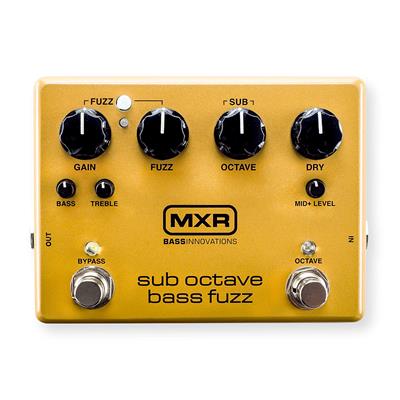 As you already know, an octave is an effect that splits or doubles the original signal. They both mix the dry tone with its synthesized version, however, the former produces the sound that is an octave higher than the original, while the latter creates an octave lower version. I have outlined the importance of owning the bass dedicated pedals couple of times now, but this is even more significant with an octave pedal. Since this effect can go even lower than the original bass sound, if the unit does not know how to treat those lower frequencies, your sound might get simply inaudible. You have to be careful with an octave up too, because if you go too high, you will lose your bass and get something resembling the electric guitar. I am sure you do not want that.
As you already know, an octave is an effect that splits or doubles the original signal. They both mix the dry tone with its synthesized version, however, the former produces the sound that is an octave higher than the original, while the latter creates an octave lower version. I have outlined the importance of owning the bass dedicated pedals couple of times now, but this is even more significant with an octave pedal. Since this effect can go even lower than the original bass sound, if the unit does not know how to treat those lower frequencies, your sound might get simply inaudible. You have to be careful with an octave up too, because if you go too high, you will lose your bass and get something resembling the electric guitar. I am sure you do not want that.
When searching for the best bass octave pedal, you have to choose between analog and digital variations. The former has its own distinctive sound that is beloved by so many musicians. Analog octave has its unique characteristics that cannot be substituted by any other device. However, pedals of this ilk tend to be monophonic (they cannot detect complicated chords) and have rather poor tracking. The digital pedals, however, are way more flexible. Due to the electronic processing of the signal, they can discern even the most complex chords. Plus, they can create both octave up and down, which adds up to their versatility. Regardless of these benefits, many bass players still prefer analog pedals over the digital ones. It is completely up to you. I would recommend trying out both variations and choosing the best one accordingly. After all, we all have different taste and requirements.
Vocal Processor
A vocal processor is an electronic unit that equalizes your vocals, adds effects to it, and harmonizes it with your instrument. It helps you smooth out your performance as a whole and make it more elaborate. This device offers studio-quality tone-shaping right at your fit and promises to take your game to a whole new level.
There is a lot of controversy regarding vocal processors. Many purists argue that using them is cheating and you do not have the right to employ them in your performance. But this is not true. The musical world is open-minded and it accepts any sort of interference with your sound. Let’s be real, if you have horrible vocals, there is no device that can help you. A vocal processor will just amplify your skills and shape them to perfection. Plus, it will allow you to add certain effects to your voice and sound like male/female, a radio, a robot and basically anything you can think of. This way your performance will be memorable for the crowd and capture the hearts of the audience. The best vocal processor will give you the opportunity to sound like a band and create something extremely distinctive. It can also be utilized as a preamp. This way your mic will not ruin your vocals and you will sound perfect no matter what. The majority of the models offer loopers as well, which gives you even more possibilities. You can simply record the piece you perform and play it back repeatedly. Vocal processors have a lot to offer and can be too good to be true. The main thing is to stop listening to what certain people have to say. Music is the most accepting phenomenon in this world and nobody has the right to ruin that. Just embrace your creativity and let your skills occupy the whole universe.
Conclusion
Huh, what a journey! We had a lot of things to discuss, did not we? I hope this guide is comprehensive enough to give you the knowledge you will need. It contains a lot of information, which might be a bit overwhelming to process. However, it will sink gradually and help you on your way to finding the perfect sound. The best effects pedal is the one that satisfies all your desires, gives you the feeling of fulfillment and makes your heart bit faster. No matter what effects you employ, if you are passionate about your music, the audience will notice. Experiment with everything, try out new things, and do not be afraid to fail. After all, every defeat is the motivation to keep trying. Be adventurous, because sound can be as versatile as your heart desires. The main thing is to never stop moving forward and improving yourself. Good luck!

